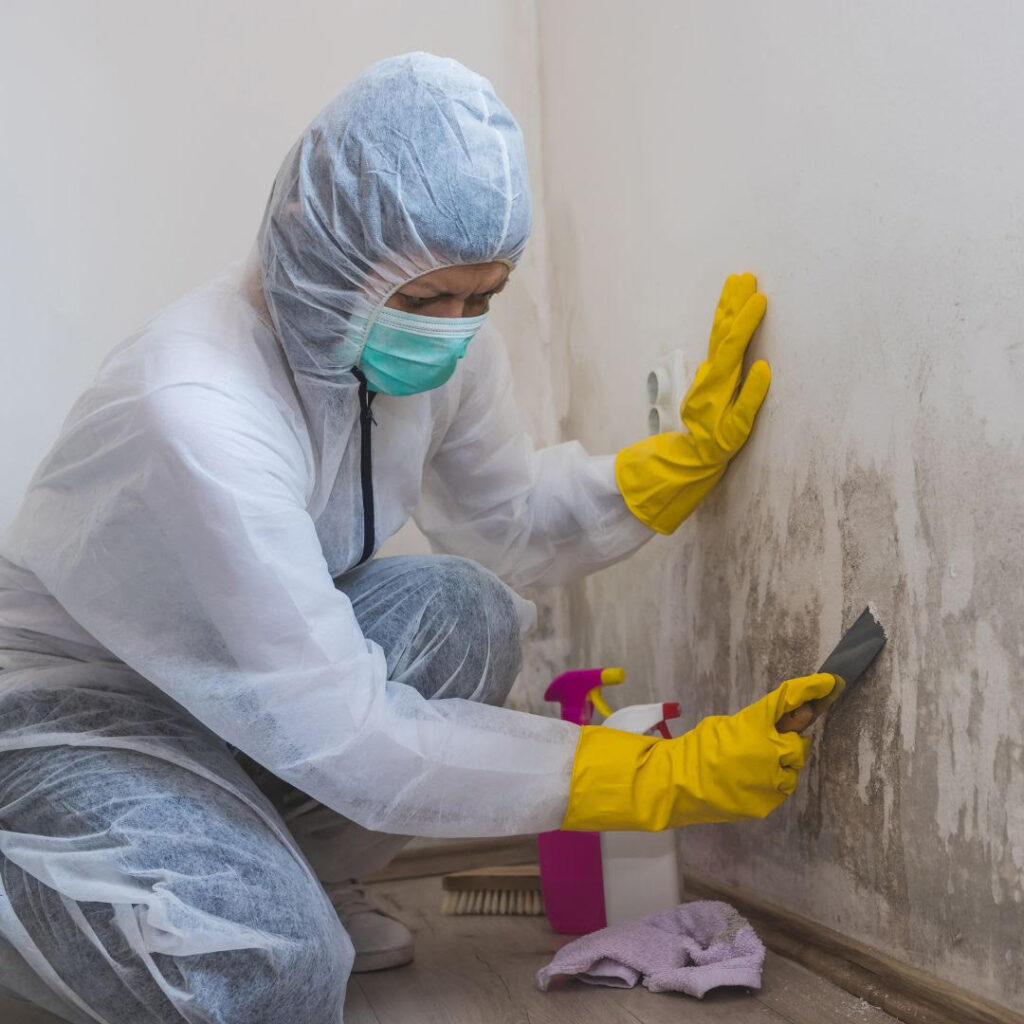Definition
Mold toxicity refers to adverse health effects resulting from exposure to molds, which are fungi thriving in moist environments. Mold exposure can lead to various health issues, particularly in individuals with respiratory conditions or allergies. Certain molds emit harmful mycotoxins, leading to the condition. It manifests through diverse symptoms, including allergic reactions and inflammatory responses, and is often misdiagnosed due to its broad symptomatology. Mold toxicity symptoms vary from immune reactions like sinus issues and asthma to chemical reactions causing cognitive difficulties, pain, and mood changes. The complexity of this condition arises from the various types of molds and individual sensitivity to these environmental factors.
Mold toxicity and its related health issues present significant challenges globally. The following are a few statistics highlighting its severity:
- The World Health Organization (WHO) attributes approximately 4.3 million annual deaths worldwide to indoor air pollution, including mold exposure.
- In the U.S., around 21% of asthma cases are linked to mold exposure, with children in mold-infested homes having a 1.41 times higher risk of asthma, particularly boys.
- Over 45 million U.S. buildings have unhealthy mold levels, posing various health risks.
- Poor indoor air quality, including mold issues, costs the U.S. over $150 billion annually in medical expenses and lost productivity.
- Approximately 50% of U.S. schools face indoor air quality problems that can lead to mold growth.
- Roughly 75% of homes in the U.S. have some kind of mold in them.
Causes / Risk Factors
- High humidity or dampness in homes or workplaces
- Poor ventilation, leading to moisture accumulation
- Water damage due to leaks, flooding, or high humidity
- Accumulation of organic materials like wood, paper, or leaves, ideal for mold growth
- Pre-existing respiratory conditions and/or allergies
Symptoms & Signs
- Respiratory issues (coughing, wheezing, difficulty in breathing)
- Allergic reactions (sneezing, runny nose, red eyes, skin rash)
- Asthma attacks in individuals with asthma
- Irritation of the eyes, nose, throat, or lungs
- Inflammatory responses and airway damage (due to exposure to mold spores and fragments)
- Symptoms resembling hormone imbalances (hair loss, rashes)
- Cognitive difficulties (brain fog, poor memory, anxiety)
- Pain (particularly abdominal pain, but may also include muscle pain)
- Numbness and/or tingling in extremities
- Metallic mouth taste
- Vertigo or dizziness
- Unexplained weight gain or loss
- Tinnitus (ringing in ears)
- Digestive issues (persistent bloating, limited tolerance to food)
- Changes in mood
- Significant fatigue
- Excessive thirst and dehydration (bed-wetting in children)
Diet and Lifestyle Considerations for Mold Toxicity
- Maintain a dry and clean home environment to prevent mold growth
- Use dehumidifiers in damp areas of the home
- Ensure proper ventilation in bathrooms, kitchens, and laundry areas
- Clean and vacuum often to reduce mold spores
- Identify key indicators of mold presence (condensation, visible mold, moldy odor, poorly maintained air conditioning systems)
- Limit dietary sources of mold (certain grains, coffee, peanut butter)
Integrative Treatments Overview
A holistic approach includes environmental adjustments to reduce mold exposure, nutritional support, natural therapies, and consultation with healthcare professionals. Addressing the underlying causes of mold growth, such as excessive humidity, is crucial, alongside strategies like sinus health management, neural retraining, inflammation reduction, and detoxification. This may involve dietary changes, stress management, and supplements like glutathione and N-acetylcysteine. Read the following section for specifics on treatment.
Nutritional & Environmental Medicine Overview
Nutritional strategies play a key role in managing mold toxicity. A diet rich in whole foods, antioxidants, fiber, probiotics, and adequate hydration is recommended. Environmental strategies include mold identification and remediation, humidity control, proper ventilation, water damage management, air purification, and regular cleaning. Supplemental support and lifestyle modifications such as stress management, quality sleep, and avoiding environmental toxins are also important. This comprehensive approach aims to reduce mold exposure, support detoxification, and enhance immune function.
It is recommended that a patient consult a certified practitioner to assess their symptoms and case history and explore their individual needs.
Nutritional Approaches to Mold Toxicity
Nutritional strategies are pivotal in managing mold toxicity. A diet focused on anti-inflammatory foods helps reduce systemic inflammation and supports the immune system. Key components include:
- Whole Foods: Emphasizing whole, unprocessed foods rich in nutrients. This includes fruits, vegetables, lean proteins, and healthy fats.
- Antioxidant-Rich Diet: Consuming foods high in antioxidants helps combat oxidative stress caused by mycotoxins. Berries, leafy greens, nuts, and seeds are excellent sources.
- Fiber-Rich Foods: Fiber aids in detoxification processes and promotes gut health, which is crucial since a significant portion of the immune system resides in the gut.
- Probiotic and Prebiotic Foods: These support a healthy gut microbiome, essential for immune function and detoxification. Include fermented foods like yogurt, kefir, and sauerkraut, as well as prebiotic-rich foods like garlic, onions, and bananas.
- Hydration: Adequate water intake is essential for eliminating toxins from the body.
- Avoiding Mold-Prone Foods: Certain foods like grains (corn, soy, wheat, barley, rye), coffee, peanut butter, and old food (has been open for or left in the refrigerator for a long period of time) can contain mold. It’s advisable to limit these in a mold toxicity diet.
Environmental Strategies for Mold Reduction
Addressing environmental factors is crucial in the management of mold toxicity. Key strategies include:
- Mold Identification and Remediation: Identifying and removing mold sources in the home or workplace is the first step. This may involve professional mold remediation services.
- Humidity Control: Keeping indoor humidity levels below 50% helps prevent mold growth. Use dehumidifiers and air conditioners, especially in damp areas like basements and bathrooms.
- Proper Ventilation: Ensure good air circulation in all areas of your home. Use exhaust fans in kitchens and bathrooms and open windows when weather permits.
- Water Damage Management: Quickly addressing any water leaks or damage is critical in preventing mold proliferation.
- Air Purification: Using HEPA filter air purifiers can help remove mold spores from indoor air.
- Regular Cleaning: Frequent cleaning, especially in areas prone to dampness, is essential. This includes routinely checking and cleaning air conditioning and heating systems.
Supplemental Support
Certain supplements may aid in the body’s response to mold exposure and support overall health:
- Glutathione: This powerful antioxidant helps in detoxification.
- N-acetylcysteine (NAC): It supports glutathione levels and assists in detoxification.
- Vitamin D: Essential for immune function, vitamin D can be beneficial, especially in individuals with limited sun exposure.
- Omega-3 Fatty Acids: These have anti-inflammatory properties and can be found in fish oil supplements.
- Probiotics: Supplementing with probiotics can support gut health, which is crucial for immune function and detoxification.
Lifestyle Modifications
Adopting certain lifestyle changes can also support recovery from mold toxicity:
- Stress Management: Chronic stress can weaken the immune system. Practices such as mindfulness, meditation, yoga, and regular exercise can be effective.
- Sleep Quality: Ensuring adequate and quality sleep helps the body’s healing and detoxification processes.
- Avoidance of Toxins: Reducing exposure to other environmental toxins such as cigarette smoke, chemical cleaners, and personal care products with harsh chemicals supports overall health.
In conclusion, a comprehensive approach to mold toxicity involves nutritional modifications, environmental strategies, supplemental support, and lifestyle changes. This holistic approach aims to reduce exposure to mold, support the body’s detoxification processes, and strengthen the immune system. Always consult with healthcare professionals for personalized recommendations and treatment plans.
Where can I find a certified practitioner?
Finding a well-trained Integrative and/or Functional practitioner requires research but is a vital step in treating complex and chronic illness.
Below are links to lists of practitioners worldwide. We recommend you research the scope, expertise and experience of any practitioners you are considering.
U.S. & Global
Institute of Functional Medicine
https://ifm.org/find-a-practitioner/
Integrative Medicine for Mental Health
http://www.immh.org/find-a-practitioner/
Medical Academy of Paediatric Special Needs (MAPS)
http://www.medmaps.org/clinician-directory/
Australia & New Zealand
Mindd Foundation
https://directory.mindd.org/
The Australian College of Nutritional & Environmental Medicine (ACNEM)
https://www.acnem.org/practitioners/
UK
The British Society for Ecological Medicine
https://www.bsem.org.uk/pages/14-practitioners
Disclaimer: Mindd Foundation does not endorse any specific individuals listed and makes no representations, warranties, nor guarantees and assumes no responsibility for any services provided. Mindd Foundation expressly disclaims all liability for damages of any kind as a result of using any products or services provided by those listed.



